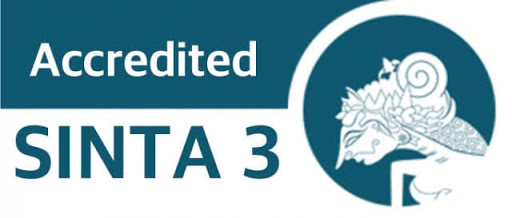THE EFFECT OF GADGETS ON STUDENTS’ LEARNING OUTCOMES IN IT SUBJECT AT GRADE V SD ST. ANTONIUS BANGUN MULIA MEDAN
Abstract
The results of data analysis and hypothesis testing and discussion concluded that this study aimed to find out the effect of gadgets on students’ learning outcomes in IT subject at grade V SD St Antonius Bangun Mulia Medan in the academic year 2020/2021. The population of this study was 55 students and all of the students were selected as the sample in this study. A quatitative method with survey type was utilized to obtain the data required in this study. The samples were chosen through random sampling technique. Then, the data were obtained from observations, questionnaires, and document studies. Te hypothesis was tested by using correlation test and t test. The results of this study concluded that the initial average score of the students’ learning outcome was 66.90 which was categorized as Fair with a percentage of 32.72%. After using the gadget in learning, the average score of students’ learning outcome was 85.36 which was categorized as Fair with a percentage of 34.54%. Furthermore, the result of hypothesis testing obtained rcount = -0.169 and tcount = -1248 while ttable = 1,673 at a significant level of 5%. Therefore, tcount < ttabel in which was -1248 < 1,673. Thus, H0 was accepted and Ha was rejected. This confirmed that gadgets had no effect on the students’ learning outcomes at grade V SD St. Antonius Bangun Mulia Medan.
Keywords
Full Text:
PDF (BAHASA INDONESIA)References
Anitah, S. (2017). Strategi Pembelajaran di SD. Jakarta: Universitas Terbuka.
Eka, A. (2019). Mengatasi kecanduan gadget pada Anak. Jakarta: Serayu Fublishing.
Fajri, I. (2018). Statistika. Jakarta: Prenada Media Group.
Hamalik, O. (2013). Proses Belajar Mengajar. Jakarta: PT. Bumi Aksara.
jaya, I. (2014). Bila si Kecil Bermain Gadget. Bogor: Beranda Agency.
Johni, D. (2013). Metodologi Penelitian Pendidikan dan Aplikasinya Pada Pendidikan Anak Usia Dini. Jakarta: Kencana.
Kesumawati, & Kesumawati, N. (2017). Pengantar Statistika Penelitian. Depok: PT. Raja Grafindo Persada.
ningsih, E. M. (2014). Metode Penelitian Terapan. Bandung: Alfabeta.
Pulungan, I. d. (2017). Ensiklopedia Pendidikan. Medan: Media Persada.
Rumiris , L., & Ester, S. (2019). Efektifitas Bahan Ajar Tematik Sekolah Dasar Berbasis Budaya Lokal Melalui Penerapan Model Pembelajaran Contextual Teaching And Learning (CTL) terhadap AKtivitas Belajar Siswa. Guru Kita, 1-7.
Rusman. (2013). Belajar dan Pembelajaran Berbasis Komputer. Jakarta: Alfabeta.
Shodiq, A. (2017). Pemanfaatan TIK sebagai Sumber dan Media Pembelajaran di Sekolah. Jurnal Ilmu Pendidikan Pkn dan Sosial Budaya , 1-11.
Slameto. (2010). Belajar dan Faktor-faktor yang Mempengaruhi . Jakarta: Rineka Cipta.
Sudjana. (2016). Metode Statistika. Bandung: Tarsito.
Sugiyono. (2016). Metode Penelitian . Bandung: Alfabet.
Suharsimi, A. (2018). Prosedur Penelitian . Jakarta: Rineka Cipta.
Susanto, A. (2014). Teori belajar dan Pembelajaran di SD . Jakarta: Kencana.
Susanto, A. (2016). Teori belajar dan Pembelajaran. Jakarta: Prenada Media Group.
Wulandari, T. (2016). Pengertian Teknologi dan Informasi. Unicom.ac.id, 1-13.
Yusuf, M. (2014). Metode Penelitian Kuantitatif, Kualitatif dan Penelitian Gabungan. Jakarta: Kencana.
Zain. (2016). Strategi Belajar Mengajar. Jakarta: Rineka Cipta.
DOI: http://dx.doi.org/10.33578/pjr.v5i1.8154
Refbacks
- There are currently no refbacks.
Copyright (c) 2021 JURNAL PAJAR (Pendidikan dan Pengajaran)

This work is licensed under a Creative Commons Attribution-NonCommercial-ShareAlike 4.0 International License.
JURNAL PAJAR (Pendidikan dan Pengajaran)
Secretariat
Program Studi Pendidikan Guru Sekolah Dasar
Gedung B1, FKIP Universitas Riau
Kampus Bina Widya Km. 12,5 Simpang Baru Panam
Pekanbaru Riau Indonesia 28293
e-mail : pajar@ejournal.unri.ac.id



